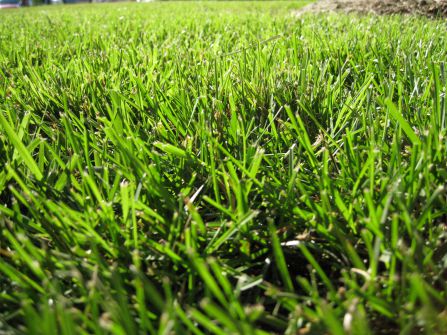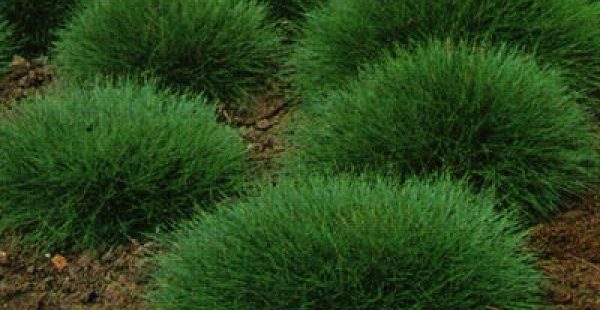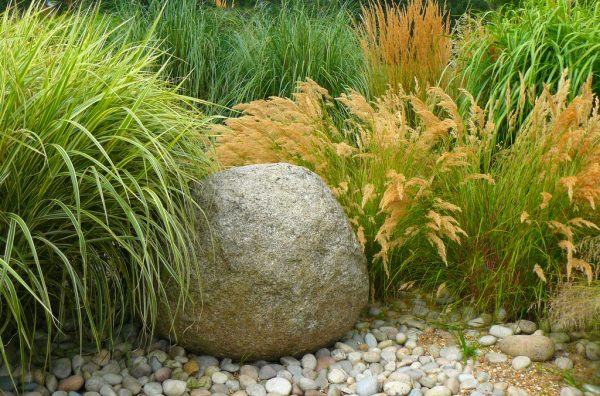What is an ornamental grass for a flower bed: the secrets of growing cereals
Content
What are the ornamental grasses
Despite the fact that different herbs have something in common (they have an underground root system and an aerial part with a stem, leaves and color), they are much different. For example, they can be: one-year, two-year, perennial; tall (from 60 cm to 3 m) and undersized (up to 40 cm), etc. Quite often, cereals are used to decorate a flower garden in combination with spicy plants - this is both beautiful and creates a unique aroma.
Tall handsome men
Tall grass (more than 1 m) looks good as the main structural element of a flower garden. This primarily applies to cereals with a beautiful bush shape:
- different varieties of miscanthus chinese with panicle inflorescences (it grows up to two meters, its leaves are lanceolate, hard);
- sharp-flowered reed grass (up to 1.5 m, blooms from July - pinkish panicles, requires moderate watering);
- beautiful feather grass (up to 1 m, has long picturesque awns);
- reed bifurcate (up to 1.2 m, a beautiful plant with decorative variegated leaves);
- oriental pinnate (up to 65 cm, must be covered for the winter);
- broadleaf hasmantium, or wild oats (up to 1 m, blooms in autumn, requires moist soil);
- sod meadow (up to 1 m, has dense leaves, requires moist soil);
- cortaderia sello (up to 3 m, gray-green leaves form picturesque bushes, blooms in large panicles in early autumn).
From spicy plants in the center of the flower garden, you can plant:
- caraway seeds (up to 1.5 m, perennial of the Umbrella family, small white or pink flowers);
- fennel (up to 2.5 m, perennial of the Umbrella family, looks like dill, yellow small flowers in the shape of an umbrella up to 15 cm wide, blooms in early summer);
- tarragon (up to 1.5 m, a relative of wormwood, its stem is erect with small lanceolate leaves, small yellow flowers appear at the end of July);
- motherboard, its other names: oregano, oregano, incense, etc. (perennial, grows up to 90 cm, has small purple flowers collected in inflorescences, blooms in mid and late summer);
- cucumber grass, or borago (annual, up to 70 cm, a beautiful plant with large bright blue flowers and a branched stem);
- red quinoa (annual, up to 80 cm, drought-resistant, has bright reddish leaves).
Video "All about grass for lawns"
Informational video with helpful lawn grass tips.
Low cereals for background
Low-growing cereals provide a wonderful backdrop. A carpet flower bed will look especially interesting if combined with bright colors. And in the center you can place something made of herbs.Among the most popular low cereals are:
- gray fescue (grows up to 20 cm, drought-resistant, beautiful plant with needle-like bluish leaves, flowers - soft reddish panicles; light-loving, winters well without shelter);
- lagurus, or haretail (annual, up to 20 cm, has inflorescences in the form of fluffy tails, light-loving; serves as a beautiful frame for a flower bed, looks especially interesting in front of roses);
- sedge kiliomarginate (up to 15 cm, has wide foliage);
- foxtail (perennial, grows up to 30 cm, blooms from the middle of summer with silky spikelets, does not suppress other plants);
- droplet (perennial, grows in a "hummock" up to 40 cm, in autumn it becomes orange-copper);
- bulbous ryegrass (perennial, up to 30 cm, has narrow white-green striped foliage, photophilous);
- gray-gray keleria (perennial, grows in a "hummock" up to 10 cm, has gray-green hard leaves, winters well, requires good drainage).
Conditions for growing ornamental grass
Some of the herbs are unpretentious and grow well on poor soils, while they do not require feeding and regular watering. Usually only spring pruning of the shoots is needed.
But most cereals, especially perennials, are best planted in loose soil so that stagnant water does not lead to root rot. Therefore, a place for a flower bed should be chosen such that neither melt nor storm water lingers there, preferably sunny or half shaded. It should be borne in mind that these varieties of grasses have a feature of "creeping" (for example, miscanthus needs about 50 cm per bush, and fescue - only a meter per 6 bushes).
Cereals in combination with herbs can be planted from spring to autumn. Many of the herbs are light-requiring, and some grasses can grow in the shade. So that there is no contradiction in the conditions of plant maintenance, this point must also be taken into account. In addition, when planting herbs, you should pay attention to the following points:
- shallow planting in dug soil;
- water the hole well beforehand, as soon as the water is absorbed, plant the plant and sprinkle with damp earth;
- additionally, you can also water it, and then sprinkle it with a small layer of dry earth;
- the tall ones are planted in the center of the flower beds, the undersized ones are grouped around them;
- for convenience, some of the herbs can be planted in plastic containers without a bottom, in this case they will not "creep away" over time.
About caring for ornamental grasses, you should know that:
- after planting, care should be taken that the soil does not dry out;
- after waterlogging of the soil due to heavy rains, the soil under the grasses should be loosened to avoid the formation of an earthen crust;
- regularly weed out so that they do not clog the growth of the grasses.
Please note that the planted plants do not require feeding in the year of planting. In the fall, the leaves do not need to be cut, this is done only in the spring. Cereals for the organization of flower beds should be selected taking into account the characteristics of neighboring partners. Correctly, when the period of maximum decorativeness of the grass will coincide with the period of flowering "partners". This is especially important when using it to decorate a seasonal flower bed.
Interesting compositions are created when cereals and flowers are selected in a harmonious color scheme. For example, the reed vine looks wonderful next to the orange flowers of helenium and yellow rudbeckia, the oriental pinnate - next to the purple flowers of the continent. In addition, exclusively from different types of cereals, you can create a picturesque flower bed that can compete with any flower. Of the spices in the center, you can place borago and red quinoa: blue borago flowers and reddish quinoa leaves will be very beautifully combined. And plant graceful low-growing cereals on the curb - for example, lagurus.
Video "How to make a garden of cereals"
How to make a corner on a lawn with cereals.Helpful design guidelines.






